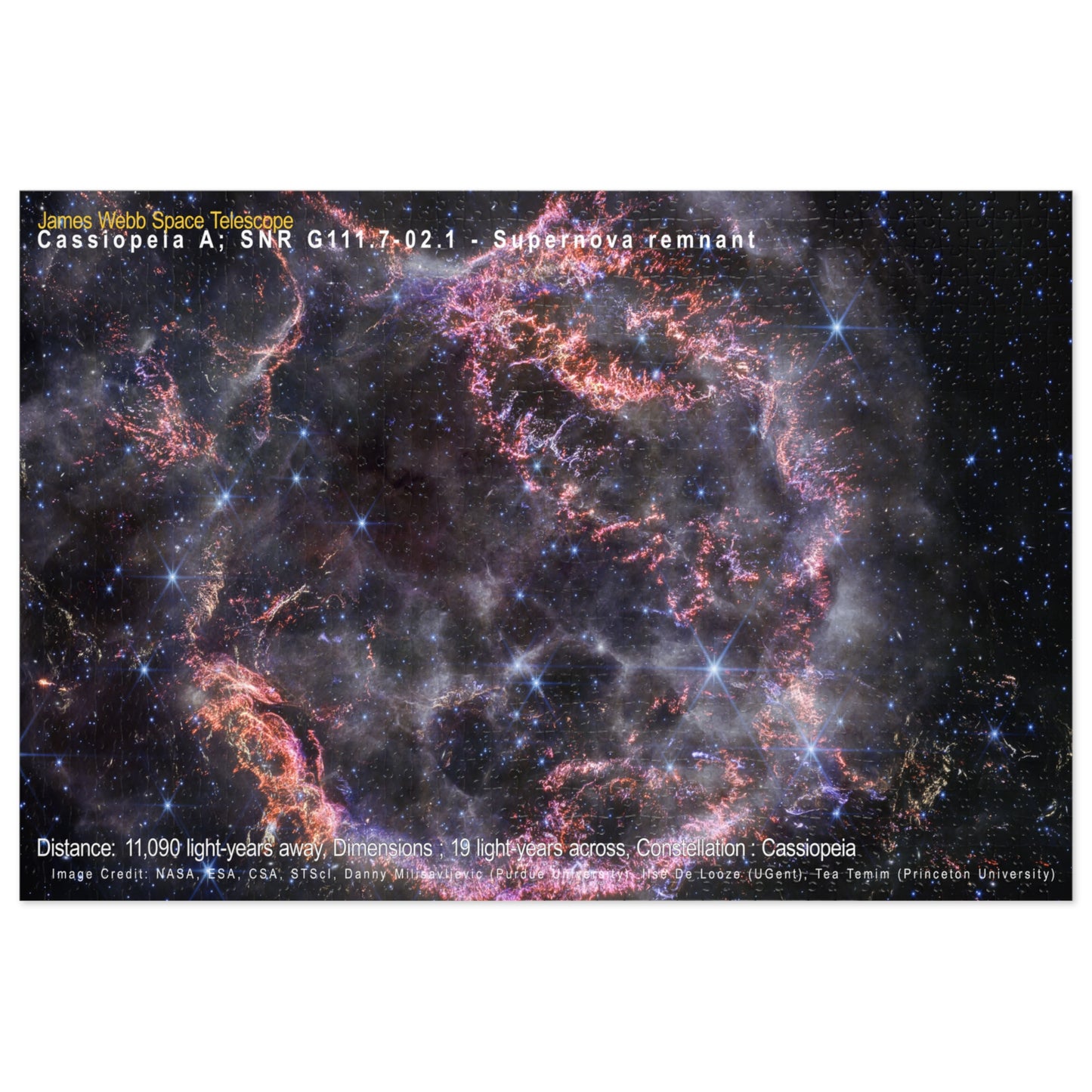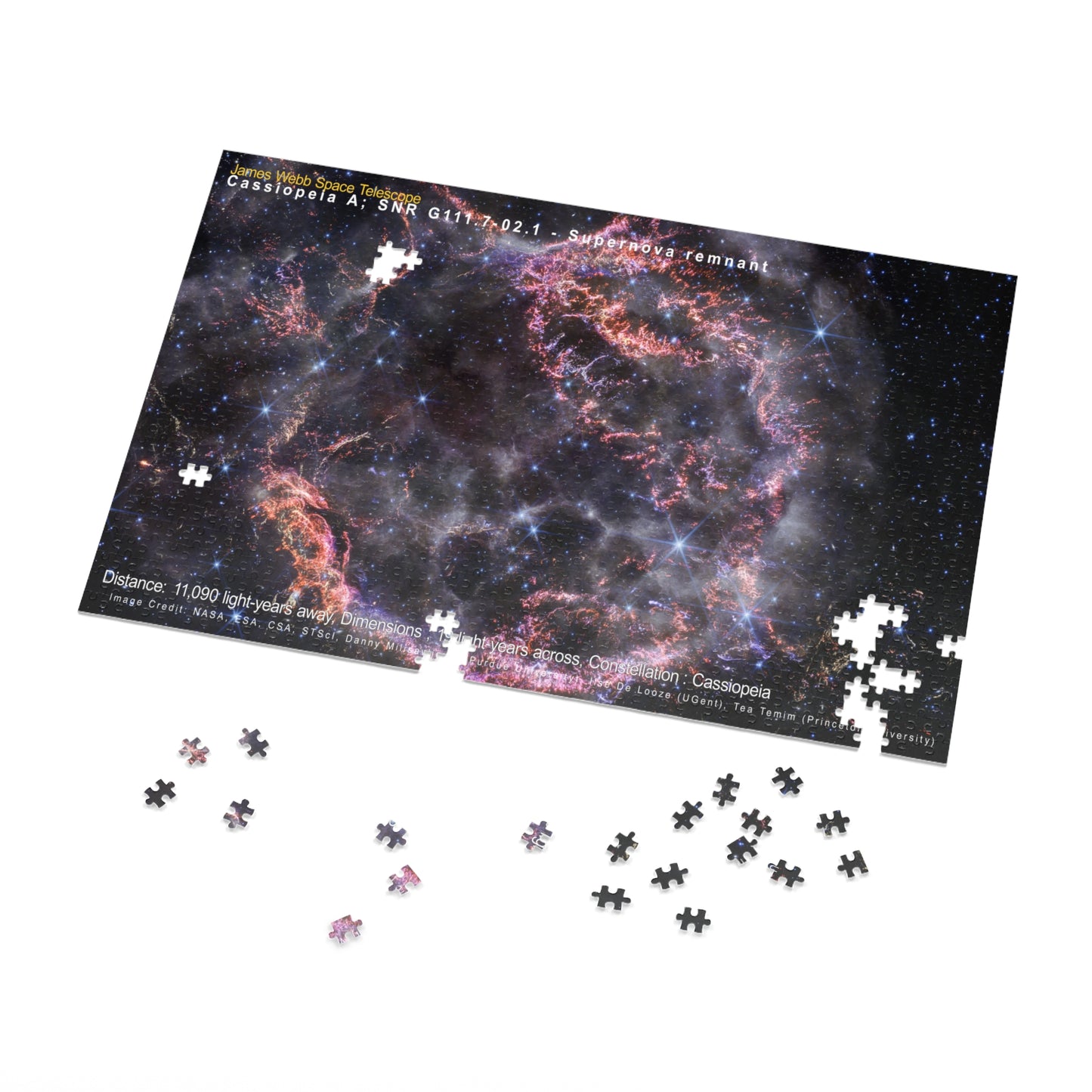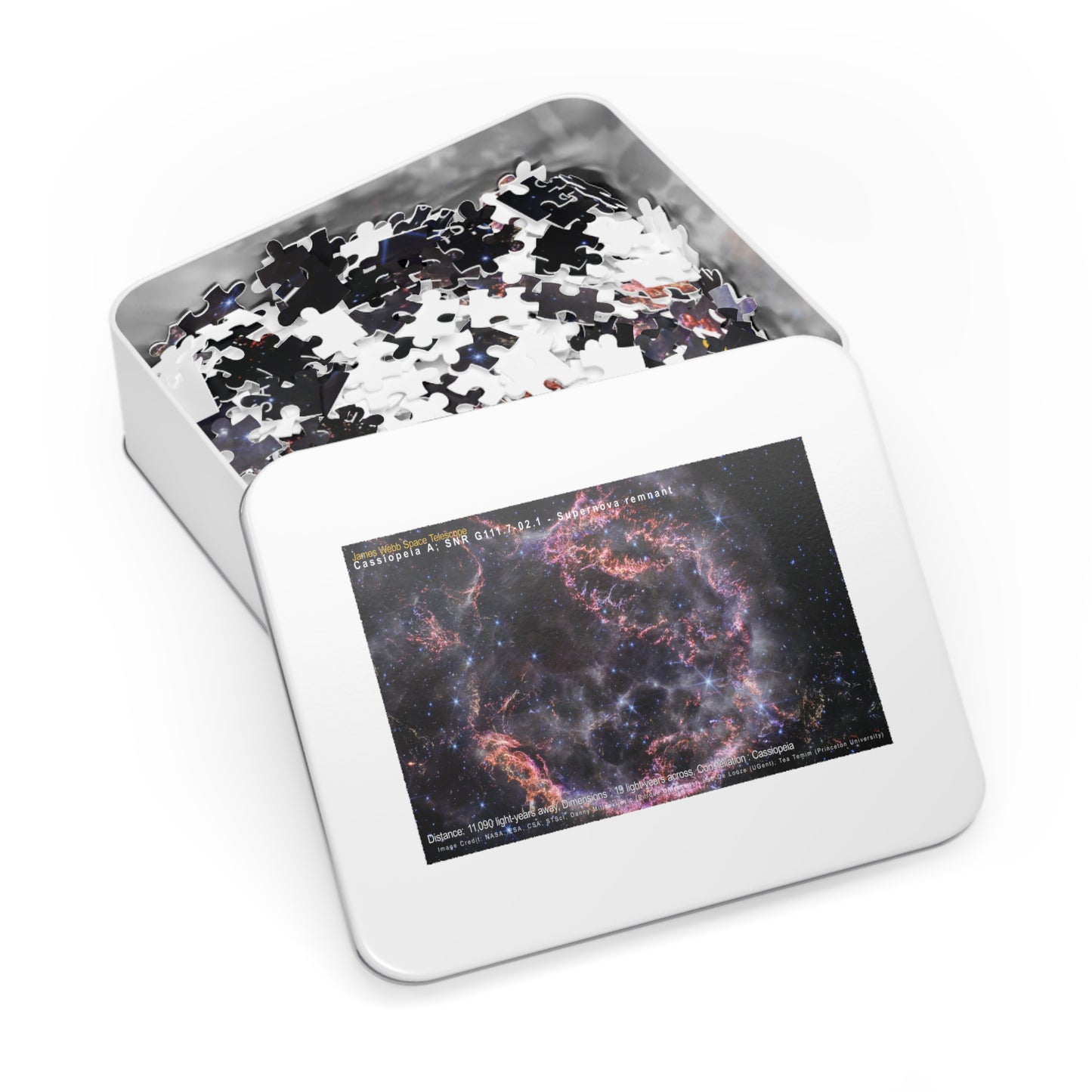Cassiopeia A, Jigsaw Puzzle
Cassiopeia A, Jigsaw Puzzle
Couldn't load pickup availability
Unveiling the Mysteries of the Cosmos: Dive Deep with Our Galaxy Puzzles!
Embark on a challenging and rewarding journey with stunning images.
A Universe of Wonder: Lose yourself in breathtaking views of distant galaxies, nebulae, and star clusters captured by the most powerful telescope ever built.
A Challenge Worthy of Any Stargazer: Choose from various puzzles to test your skills.
Sharpen Your Mind: As you piece together the cosmos, you'll develop problem-solving abilities, logical reasoning, and concentration.
Become an astronaut of the mind and explore the universe from the comfort of your home!
Cassiopia A:
A new high-definition image from NASA's James Webb Space Telescope's NIRCam (Near-Infrared Camera) unveils intricate details of supernova remnant Cassiopeia A (Cas A). It shows the expanding shell of material slamming into the gas shed by the star before it exploded.
The most noticeable colors in Webb's newest image are clumps of bright orange and light pink that make up the inner shell of the supernova remnant. These tiny knots of gas, comprised of sulfur, oxygen, argon, and neon from the star itself, are only detectable by NIRCam's exquisite resolution, and give researchers a hint at how the dying star shattered like glass when it exploded.
The outskirts of the main inner shell look like smoke from a campfire. This marks the point where ejected material from the exploded star is colliding with surrounding circumstellar material. Researchers say this white color is due to light from synchrotron radiation, which is generated by charged particles traveling at extremely high speeds as they spiral around magnetic field lines.
There are also several light echoes visible in this image, most notably in the bottom right corner. This is where light from the star's long-ago explosion has reached, and is warming distant dust, which is glowing as it cools down.
Constellation: Cassiopeia
Dimensions: Image is about 5.8 arcminutes across (19 light-years)
Distance: 11,090 light-years
Exposure Dates: 05 November 2022
Image Credit: NASA, ESA, CSA, STScI, Danny Milisavljevic (Purdue University), Ilse De Looze (UGhent), Tea Temim (Princeton University)
Share






